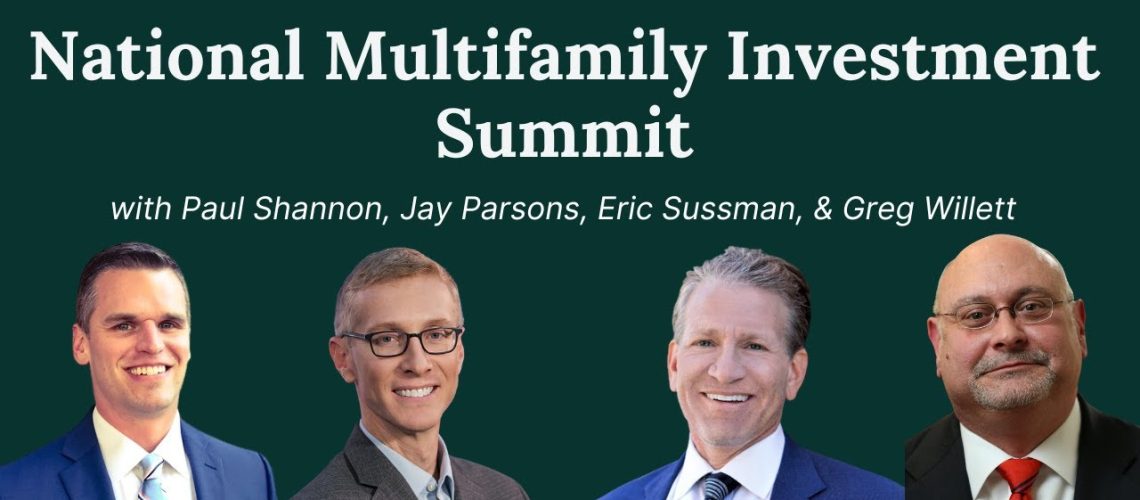In a recent webinar, moderator and co-host of the PassivePockets Podcast Paul Shannon was joined by three respected experts—Jay Parsons (Rental Housing Economist), Greg Willett (Rental Housing Industry Expert & Chief Economist at LeaseLock), and Eric Sussman (UCLA Faculty Member & Founding Partner of Clear Capital, LLC)—to unpack how today’s economic and policy shifts are shaping multifamily investing.
Here are our top 10 takeaways from the discussion:
1. Don’t Bet Your Strategy on the Fed
“Even the Fed can’t forecast its own decisions accurately. Cap rates already reflect expected rate cuts.” — Jay Parsons
Trying to time the market around interest rate cuts is risky and often misleading. Cap rates and valuations already price in expectations, and even professional economists consistently misjudge the Fed’s path. LPs should focus on deal fundamentals and operator quality instead of chasing monetary policy headlines.
2. Bridge Debt May Return—Cautiously
“Bridge financing begins to reemerge, but it doesn’t necessarily come roaring back.” — Greg Willett
With potential rate cuts, some sponsors may return to bridge loans. But investors need to evaluate whether assets are stabilized, whether projected rent increases are realistic, and whether operators can weather volatility. Bridge debt adds leverage risk, especially in markets still digesting new supply.
3. Multifamily Demand Is Bifurcated
“We do have a severe shortage of affordable housing. At the same time, more than a million new market-rate renters over the last five years spend just 22% of their income on rent.” — Jay Parsons
“We tend to have rent cuts—more severe in Austin, Phoenix, Denver—because markets are struggling to digest all the new product coming online.” — Greg Willett
Demand isn’t uniform across renter segments. Class A properties continue to attract high-income renters with room in their budgets, while workforce housing tenants are more vulnerable to job losses, doubling up, or delinquencies. LPs must know which renter profile underpins each deal’s rent roll.
4. Supply Overhang Will Take Time to Digest
2024 brought the highest level of multifamily completions since the 1970s. While absorption has been strong, oversupply is putting downward pressure on rents in fast-growing Sun Belt metros. Passive investors should scrutinize local supply pipelines when evaluating opportunities.
5. Geography Matters More Than Labels
“The strongest rent growth in July was in San Francisco and Chicago. Does that mean you should put all your money there? I’m not sure that’s true.” — Eric Sussman
Instead of thinking in broad A/B/C property class terms, focus on regional dynamics. Midwest and coastal markets with low new construction are stable, while overbuilt metros face headwinds. Picking markets with favorable demand-supply balance is more important than chasing generic asset classes.
6. Operations Trump Pro Formas
“In a bull market, the rising tide lifts all boats. In a bear market, it’s all about hyper-focus on costs and heads in beds.” — Eric Sussman
Rising expenses (insurance, payroll, utilities) are squeezing NOI. In today’s environment, the operator’s ability to manage costs, retain tenants, and execute the business plan matters far more than any spreadsheet projection. LPs should evaluate operators’ track records in downturns, not just acquisition wins.
7. Watch Consumer Health Closely
“Credit card debt is running up rapidly, and delinquencies are starting to turn upward as well.” — Greg Willett
Renters’ financial health is the foundation of multifamily performance. Rising debt, resuming student loan payments, and weaker hiring for young workers could stress Class B and C tenants. LPs should ask how operators screen for tenant quality and what delinquency assumptions are in the model.
8. Rent Control Isn’t the Answer
“There’s 100 years of evidence it doesn’t work. The real solution is to build more housing.” — Jay Parsons
All panelists agreed that rent control fails to fix affordability and often worsens shortages. Instead, expanding supply—through reduced barriers to construction and incentive-based policies—is the only proven path. For investors, exposure to heavily regulated markets introduces risk that can undermine returns.
9. Expenses Are Rising Faster Than Many Models Assume
“Insurance alone was a 12% increase year over year. Payroll and utilities are also climbing.” — Paul Shannon citing TREPP data
Many underwriting models still plug in 2–3% expense growth assumptions. In reality, costs are increasing much faster, eroding NOI and squeezing distributions. LPs should challenge sponsors’ assumptions and ask for sensitivity analyses around expenses.
10. Multifamily Remains a Relative Safe Haven
“The beautiful thing about rental housing is that even a poor-performing portfolio can still be 90% occupied.” — Jay Parsons
Despite uncertainty, multifamily remains one of the most resilient real estate sectors. Unlike office or retail, demand for housing is constant, and occupancy rarely collapses. For passive investors, this makes multifamily a defensive asset class in turbulent markets—though deal and sponsor selection still matter.
Bottom Line
The Summit’s central theme was uncertainty—but uncertainty breeds opportunity. For LPs, the path forward is clear: be conservative, partner with proven operators, pick your markets wisely, and don’t fall for rosy pro formas.
Watch the full webinar replay below:


